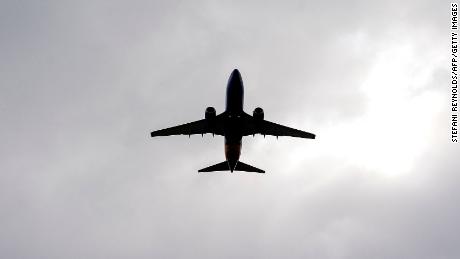Airline concerns over 5G rollout persist despite FAA clearances

(CNN)The Federal Aviation Administration has cleared more commercial airliners — notably more smaller, regional jets — to fly in the situations where pilots consider possible 5G interference to be the most dangerous.
In a new statement, the FAA says it has issued more approvals that allow 78% of the US commercial airliner fleet to perform low-visibility landings at airports near where wireless companies deployed 5G. Airlines said 5G towers set to go live nationwide on Wednesday could cause interference and errors in radar altimeters — instruments commercial pilots need to perform such landings — since they operate on a similar radio frequency.
Verizon and AT&T, which owns CNN’s parent company, this week delayed the rollout at some airports while a permanent fix to prevent inference is in the works.
Airplane models with one of the 13 cleared altimeters include all Boeing 717, 737, 747, 757, 767, 777, 787, MD-10/-11 jets; all Airbus A300, A310, A319, A320, A330, A340, A350 and A380 models; and some Embraer 170 and 190 regional jets, the FAA said.
“The FAA is working diligently to determine which remaining altimeters are reliable and accurate where 5G is deployed in the United States,” the statement said. “We anticipate some altimeters will be too susceptible to 5G interference. To preserve safety, aircraft with those altimeters will be prohibited from performing low-visibility landings where 5G is deployed because the altimeter could provide inaccurate information.”
But a sizable and less visible portion of the aviation industry remains in limbo.
“Crisis has not been averted,” says Faye Malarkey Black, who as Regional Airline Association president represents the carriers connecting larger hubs to dozens of smaller cities around the country.
The flights have brands like American Eagle, Delta Connection, and United Express. The flights are contracted out to companies or subsidiaries like Envoy, ExpressJet, Republic Airways and SkyWest Airlines.
The Federal Aviation Administration has approved procedures for more than a dozen models of Boeing and Airbus planes to perform low-visibility landings at some airports where new 5G cell phone technology could interfere and throw off critical flight equipment. Verizon and AT&T, which owns CNN’s parent company, this week delayed the rollout at some airports while a permanent fix to prevent inference is in the works.
But the FAA’s approvals do not cover many of the smaller planes flown by regional carriers, Black said.
“Manufacturers for regional aircraft have submitted those same plans to the FAA,” Black told CNN. “They have not heard word back. We don’t know when they’ll hear word back.”
The FAA did not immediately comment on the matter.
One of the regional carriers, SkyWest, told CNN late Wednesday that it has “not received updates from the FAA on mitigations for our fleets.”
“If weather deteriorates at any affected location, there remains potential for significant operational impact until full mitigations can be put into place for all commercial aircraft,” SkyWest said.
But the company has already had to deal with a few diversions.
“Weather conditions at some airports led to a small number of flight cancels and diversions this morning as a result of 5G implementation,” the company said in a statement. “We will process changes as soon as we receive the FAA’s mitigations for our E175 aircraft in low visibility conditions.”
“As always, we will not compromise safety,” Skywest added.
Several other regional carriers referred questions to the RAA or did not respond.
The issue meant that a United Express flight headed to San Francisco on Thursday was stuck circling the airport because of poor weather. United acknowledged the issue. SkyWest did not immediately comment on this particular flight.
“If there’s weather at the destination airport or the forecast of weather, then the dispatch isn’t going to release that flight,” Black said, leading to a delay or cancelation. “In the instance that aircraft are enroute and are inbound to an airport, and fog rolls in … then you’re going to have to circle, and then eventually divert to a reliever airport.”
The result leaves travelers in unexpected places, and planes and crews out of position for the next flight.
“The ripple effects of this will be very substantial,” Black told CNN. “All of our members are looking into it. They are developing these contingency plans.”
Source: Read Full Article




